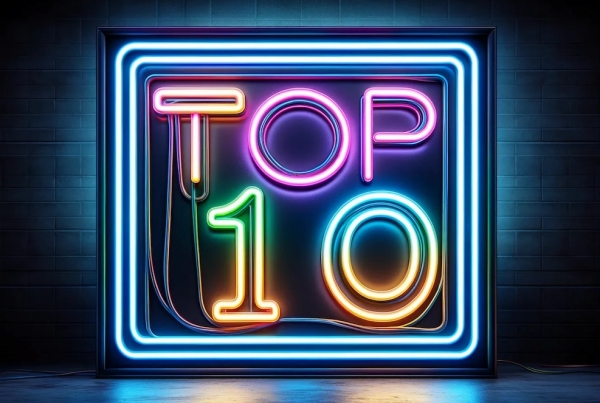It’s hard to believe how much search has changed over the past few years. From AI considerations to constant Google algorithm updates B2B companies need to figure out how to connect with their audience and clearly answer questions. This means shifting from older tactics, like quantity over quality, to a smarter approach that focuses on quality content, website optimization, and user-friendly experience. Let’s break down what matters now and how you can adjust your strategy in 2025.
From Simple Blue Links to Meaningful Answers
Remember when SEO was all about chasing backlinks and tweaking meta tags until your page finally ranked? Those days are behind us. Today, search engines reward content that answers questions directly and feels helpful. Instead of trying to impress with fancy buzzwords, your job is to offer real insights. For example, if you run a software firm that sells project management tools, don’t just write a long article about “project management” in abstract terms. Talk about the specific challenges your clients face, like coordinating remote teams or keeping projects on track, and share practical tips. This approach makes your content useful and easy to read. Tools like SEMRush can help you figure out the questions that your audience is asking based on specific keywords.
Trends in SEO for 2025
Let’s talk about the trends that really matter and that you can put into action today.
AI and Content Creation
AI isn’t here to take your job, it’s here to help you work better. Software tools like ChatGPT and Jasper can help you brainstorm topics, generate outlines, and even suggest ways to phrase or re-word your ideas. But, remember to use them for your rough draft only, and remember to add in your own statistics, metrics, and examples to ensure your content is unique. We’ll talk more about this later on. The goal of your content is to have it sound like you’re a thought leader in your industry, not a robot reciting facts.
Fast, Optimized Websites
The average attention span of adults is 8.25 seconds. So, if your website takes a long time to load on either desktop or mobile devices, there’s a good chance the visitor will bounce. Additionally, you’ll also need to make sure that your website’s content is easy to consume, broken out with different types of headers, a mix of paragraphs and bullet points, and images. B2B companies in particular need to pay attention to how their websites are used, as competition is high. Regular checks with tools like Google PageSpeed Insights can help you catch potential issues before they drive your visitors away.
Answer Questions Clearly
Search results are all about providing quick, helpful answers. When someone types in a query, they want to know “what’s the deal?” or “how can I fix this problem?” For example, instead of a generic post about “SEO techniques,” you could write a blog titled “How to Fix a Slow Website in 2025: 5 Simple Steps.” That title immediately tells your reader that you understand their pain point and have practical advice to share. The key is to keep your writing simple and direct. When you have a title in mind, try Googling the title and reading through the first few articles that come up to ensure yours is better in terms of length, structure, and information.
Voice and Video
It turns out that many people now prefer watching a short video or even listening to a quick podcast rather than reading long articles. B2B companies can benefit from adding video demos or interviews to their blogs. For example, a product demo video can show exactly how your service works, keeping the audience engaged and making your points clearer. Additionally, voice search with Alexa and others is continuously on the rise. If you’re writing content, think about the way people speak. Instead of saying “enterprise resource planning solutions,” you might say “best tools for managing business operations.” This small change can help your content match what people are actually asking.
SEO for B2B Companies
Now, let’s focus on how these ideas apply to B2B companies. Your audience is smaller and more specific, and they often need detailed answers. Here’s how you can make your SEO efforts count.
Know Your ICP
The first step is really understanding who you’re talking to. Spend some time creating detailed profiles of your ideal customers. Once you have these buyer personas, tailor your content to speak directly to them. Write in a way that sounds like you’re having a one-on-one conversation. Instead of saying, “B2B companies must adopt innovative strategies,” you might say, “If you’re finding it hard to keep up with production demands, here are a few ideas that might help.”.
Content that is Helpful
Your content should offer real value. This means sharing tips, how-to guides, and success stories that your readers can actually use. Rather than writing an article full of industry jargon, consider sharing a case study about how you helped a client cut costs by 20%. Use real numbers, clear steps, and a friendly tone to explain what you did and why it worked. Your goal is to build trust. The more useful your content, the more likely readers are to think of you the next time they have a problem to solve. This goes for any content you put out, whether it’s on your website, social media, or YouTube channel.
Use Real Examples
Nothing beats a good story, especially when search results are flooded with generic AI articles that provide little value. When you share examples of how your services made a difference, keep it conversational. Share an example about how you helped a customer experiencing an issue, like lack of lead generation, and what you and your team did to solve this issue. Ensure to include stats and metrics that further drive home your example.
Optimizing for Zero-Click and AI-Enhanced Search Results
The rise of AI-powered answer boxes and zero-click searches presents a unique challenge: how do you drive traffic when users get their answers directly on the SERP? The key is to optimize for featured snippets, video carousels, and other rich results that not only increase your visibility but also encourage users to visit your site for more comprehensive insights. You can see from the example below of a Google AI Overview, that there are multiple blogs linked throughout the AI overview that provide further information.
 Tips for Zero-Click Optimization:
Tips for Zero-Click Optimization:
- Structure Your Content: Use clear headings, bullet points, and numbered lists. This makes it easier for search engines to extract key information for featured snippets.
- Answer Questions Directly: Dedicate sections of your content to answering common questions in a concise manner. This is where answering questions in the form of blog articles is extremely valuable.
- Leverage Multimedia: Embed relevant videos, infographics, and interactive elements that can capture users’ attention and prompt them to click through for further details.
Generative Engine Optimization (GEO) and Chatbot Visibility
With the rise in AI tools like ChatGPT, we have seen a decrease in searches on traditional search engines like Google and Bing. This is because people are turning to ChatGPT and other tools to find answers to their questions and do research. The concept of Generative Engine Optimization, or GEO, goes hand in hand with SEO. A recent study by The Guardian suggested that including credible citations and using authoritative language can boost your visibility in chatbot-generated answers by as much as 40%.
Following Google’s Algorithms
One topic that often comes up is Google’s emphasis on its EEAT algorithm: Experience, Expertise, Authority, and Trustworthiness. While the term might sound technical, it’s really about making sure your content feels genuine and reliable. Here is a brief description of the EEAT algorithm:
Experience: Show your readers that you’ve been there. Include personal stories or examples that highlight your hands-on experience.
Expertise: Make it clear you know your stuff. Use clear explanations, share insights from your work, and don’t be afraid to say, “Here’s what I learned from a real project.”.
Authority: Build your reputation by backing up your claims with data, testimonials, or even external sources that support your points.
Trustworthiness: Be transparent. Let your readers know why they can rely on your advice. Whether it’s by showing customer reviews, case studies, or simply being honest about what you do and don’t know.
How to Apply EEAT to Your Content
For B2B companies, following the EEAT algorithm simply means you need to keep your content relatable, valuable, and understandable for the consumer. It’s crucial to include examples of your work and information that is not easily known. This might mean sharing a brief case study or a quick tip that made a difference for a client. It’s also important to have an “About” page that tells your story, shows your credentials, and explains your company’s journey. Readers want to know there’s a real team behind the words, and when they see that, they’re more likely to trust your advice.
What’s Next?
SEO in 2025 is less about chasing trends and more about being clear, helpful, and real. It’s about answering questions in a way that feels natural and approachable. For B2B companies, that means talking directly to your clients’ needs, using examples they can relate to, and always keeping the focus on providing real value.
If you’re looking for a partner who understands this approach and can help you bring your content to life, we’re here to chat. Let’s work together to make your online presence one that people trust and turn to for advice.
About IN2communications
IN2communications is an award-winning digital marketing and web design agency helping hundreds of B2B organizations create awareness, boost consideration rates and generate sales leads.
Our awesome team provides experienced expertise in the following areas: Creative Strategy, B2B Campaigns, Web Development, Video Production, Social Media, Paid Advertising, SEO, Email Campaigns, Blogging, Presentations, Webinars and remarkable Content Creation.




